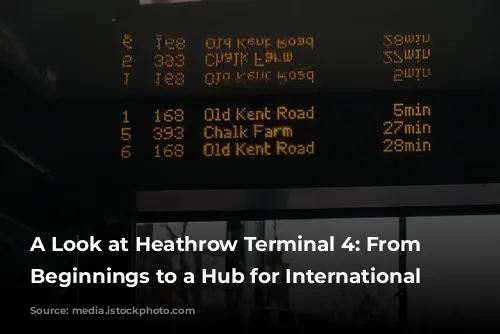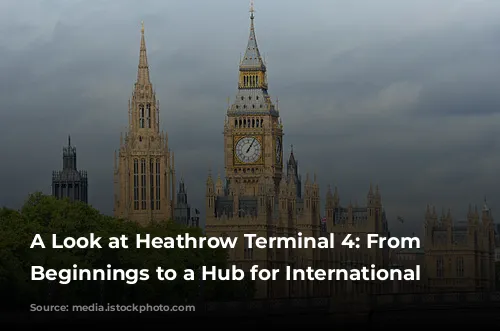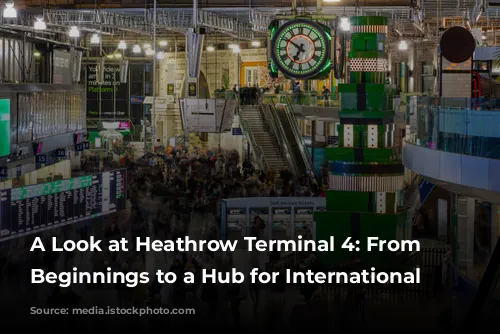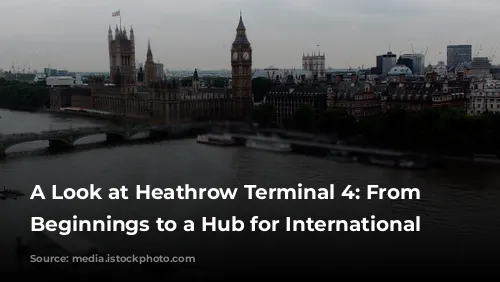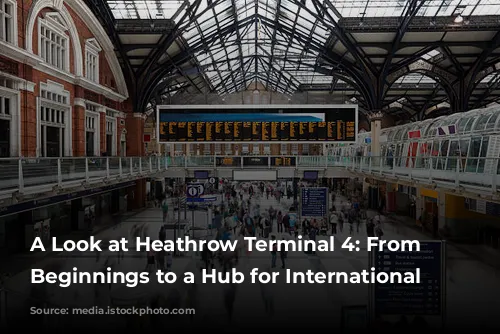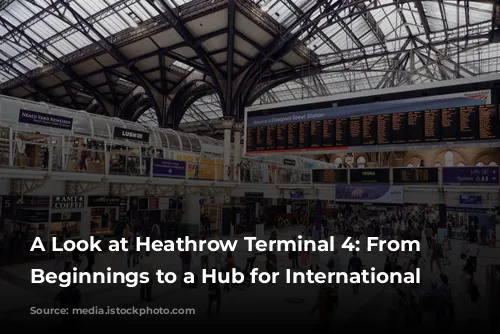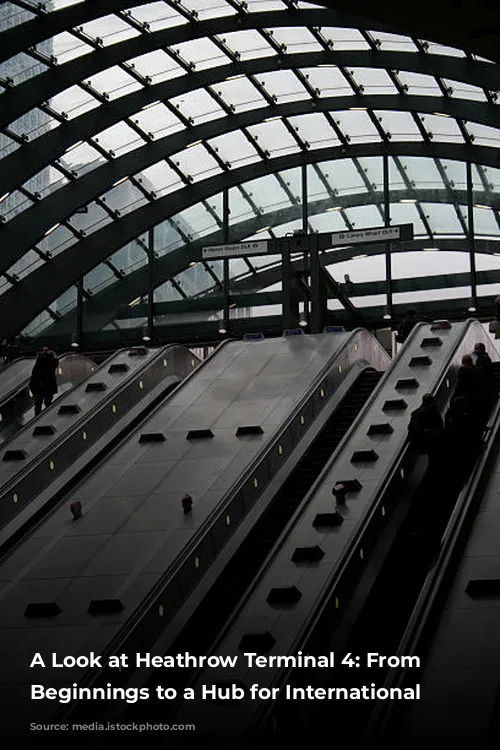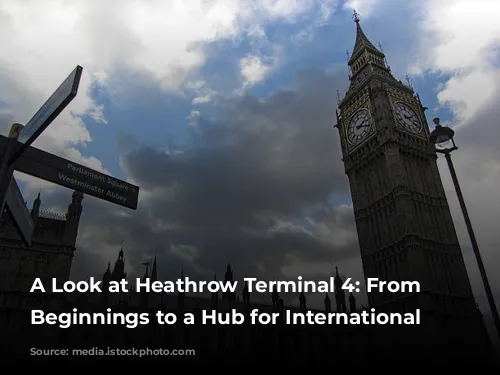Heathrow Terminal 4, a prominent landmark at London’s busiest airport, has witnessed a remarkable journey since its inception. Initially conceived as a hub for short-haul flights, it has evolved into a bustling gateway for global travelers, accommodating a diverse range of airlines and offering a wide array of amenities. Let’s delve into its history, its design, and its present-day operations.

A Terminal Built for Speed: The Early Years of Heathrow Terminal 4
Opened in 1986, Terminal 4 was a groundbreaking facility in its time, featuring innovative design principles aimed at maximizing efficiency. It was specifically designed to accommodate short-distance flights, catering to the needs of business travelers. The terminal’s layout was meticulously crafted to facilitate a seamless flow of passengers, with boarding gates strategically positioned in close proximity to check-in and security areas.
The emphasis on quick passenger processing was a significant departure from existing terminals, highlighting the importance of streamlining operations for short-haul flights, which are often characterized by tight turnaround times.
The terminal also boasted a departure concourse that stretched over half a kilometer in length, further enhancing its ability to handle a large volume of passengers. This design aimed to prevent congestion and ensure a comfortable and efficient travel experience.
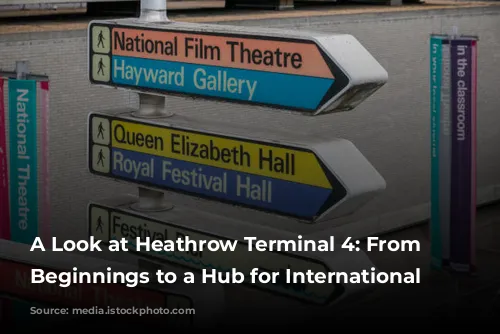
From British Airways Exclusive to a SkyTeam Hub: A Transformation in Operations
In its early years, Terminal 4 was a solely British Airways affair, fulfilling the airline’s ambitious vision of having all its operations centralized under one roof. However, with the opening of Terminal 5 in 2008, British Airways relocated most of its flights, paving the way for a new era for Terminal 4.
This shift in airline operations led to a significant transformation for the terminal. Recognizing the need to adapt to a multi-airline environment, Heathrow embarked on a £200 million upgrade to accommodate the diverse needs of the airlines that would now call it home. The departures forecourt was modernized to streamline traffic flow and enhance security measures, while an extended check-in area was introduced to handle the influx of passengers.
The terminal’s interior underwent a comprehensive renovation, creating a modern and welcoming atmosphere for travelers. To cater to the growing demand for premium services, a SkyTeam Alliance passenger lounge was opened, followed by a series of other exclusive lounges, including those operated by Etihad Airways, Malaysia Airlines, Gulf Air, Qatar Airways, and Plaza Premium.
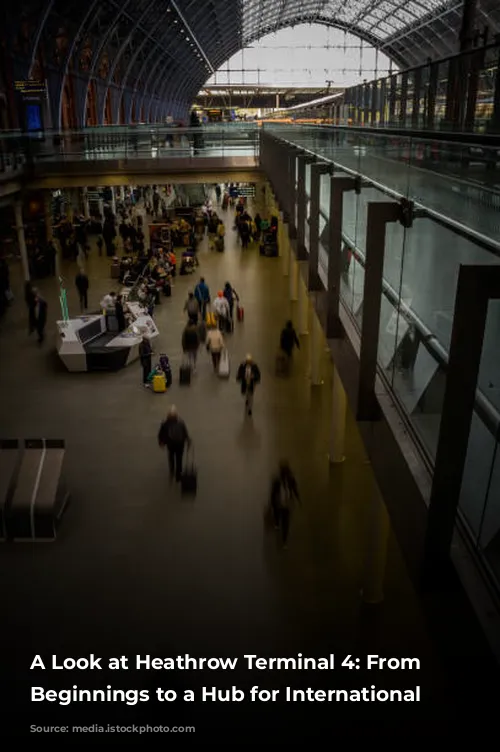
Challenges and Resilience: The Pandemic’s Impact and Terminal 4’s Reopening
The COVID-19 pandemic brought unprecedented challenges to the aviation industry, including the temporary closure of Heathrow Terminal 4 in 2020. With the sharp decline in air travel, the terminal’s operations were suspended, leading to the withdrawal of rail and tube services.
However, with the gradual recovery of the aviation sector, Terminal 4 made a comeback in June 2021, reopening to welcome passengers arriving from red list countries. This phased reopening marked a significant step towards normalcy, demonstrating the terminal’s resilience in the face of unforeseen circumstances.
In February 2022, the announcement of Terminal 4’s complete reopening for the summer travel season was met with enthusiasm, signaling a return to a more vibrant and active travel environment. The terminal’s reopening solidified its position as a vital hub for international travel, connecting passengers from diverse destinations to London and beyond.

Connecting the World: A Hub for Diverse Airlines and Seamless Travel
Today, Terminal 4 serves as a base for a wide array of airlines, including members of the SkyTeam alliance, as well as Oneworld and non-aligned airlines. These include Malaysia Airlines, Royal Air Maroc, Qatar Airways, Air Malta, China Southern Airlines, El Al, Etihad Airways, and many more.
The terminal’s strategic location, accessibility, and convenient connections to the London Underground, Elizabeth line, and local bus services make it a seamless choice for passengers.
Heathrow Terminal 4 has come a long way from its initial focus on short-haul flights. It has evolved into a modern, multi-airline hub, offering a wide range of services and amenities. The terminal’s resilience in the face of the pandemic and its unwavering commitment to delivering a positive travel experience make it a vital gateway for passengers traversing the globe.
